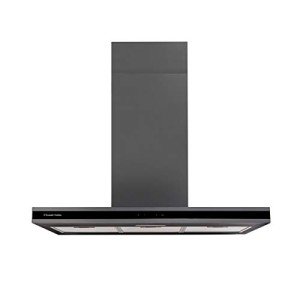The One Island Vent Hood Trick Every Person Should Know

How to Ventilate an Island Vent Hood
Suspended from the ceiling, an island vent hood helps circulate air and keeps your kitchen complimentary of smoke and odors. It's likewise an elegant feature that enhances your cooking area.
Ventilation types consist of external venting, which pushes air through ductwork to the beyond your home, and recirculating models that filter and recycle cooking fumes. Some hoods can even be transformed in between one and the other.
Ventilation
Unlike wall-mounted range hoods that vent air vertically through the wall to the outside, island vent hoods utilize ductwork that goes through the ceiling to exhaust the cooking location to the outdoors. The distinction is that they can also be used to recirculate air.
Discover our choice of commercial and designer custom hoods with powerful ventilation systems. With adjustable specs, discover the perfect hood for your kitchen area.
Dacor's ConnectOn auto-responsive technology turns on the hood and increases the fan speed in response to the cooktop, providing powerful efficiency while using minimal noise. It's just another manner in which you can cook with self-confidence. Include a touch of modern-day with this stainless-steel pyramid-style wall-mount canopy hood. This hood gracefully accentuates sophisticated cooking areas that follow a more standard design style and clears the air of smoke, steam and cooking smells.
Design
Unlike wall-mounted range hoods that are mounted versus the wall, island vent hoods are suspended from the ceiling over an island or peninsula cooktop or range. They also utilize ductwork to exhaust air out of the home. This style is perfect for cooking areas that have a lot of open area, and it assists to add visual interest to your room. This new home functions Blackberry stained cherry cabinetry on the specification, and a natural stacked stone on the island and vent hood to match the Gunstock stain on the cabinets. 10ft ceilings and a skylight help to keep the kitchen brilliant and large.
Noise
While an island vent hood does a fantastic job of filtering smoke, grease and odors out of your kitchen, it can also create some sound that disrupts the tranquility of your cooking space. Luckily, there are some strategies you can employ to decrease this noise and permit you to cook in peace.
One of the primary causes of excess range hood sound is brought on by fan motor problems such as stiff bearings or improperly lubed fans that produce a loud humming sound. Ductwork can likewise contribute to this issue specifically if the ducts are too small or if they are obstructed with dust.
The finest method to minimize sound is to make sure that your vent hood has the greatest air flow ranking that you can manage. The Home Ventilating Institute (HVI) suggests an air flow rate of 100 to 250 cfm for wall-mounted hoods over 30-inch large stoves. This hood needs to likewise have a multispeed fan to allow lower fan speeds during light cooking. Among the most basic ways to lower the noise is to ensure that the ducting is smooth-walled, as corrugated duct restricts air flow. You ought to also keep the duct runs as short and straight as possible to prevent any kinking.
Installation
Ventilation of island range hoods is a different procedure than wall-mounted units, considering that they are suspended from the ceiling over an island or peninsula cooktop or stove. They usually need a duct that goes through the ceiling and out through the roofing system, which can be a complicated job for an unexperienced homeowner.
In island extractors , they must be set up at least 24-inches to 36-inches above the cooking surface. The height may vary, depending on the size of the hood and the ceiling. If you have existing ducting and electrical circuitry in the kitchen ceiling, this type of vent hood is reasonably simple to set up. If not, it's suggested that you seek advice from an expert.
To begin setup, ensure the hood can fit through the opening you have actually selected for the vent and that it's the ideal width to accommodate the ductwork and exhaust. If the hood is too wide, it can reduce the efficiency of the vent and will increase sound levels. Next, cut a small hole in the ceiling and use a wire cutter to examine that there's no pipes or electrical circuitry near the hole. If there is, think about employing a professional for the job or changing to a recirculating system.

If there isn't, you can start the bigger vent hole by drilling locator holes with a drill and a 1/2-inch masonry bit in each corner of the area. Then utilize a jigsaw to cut the larger vent hole. Lastly, include a drywall spot and paint to complete the job. As soon as the hood remains in place, you can run the electrical circuitry and connect it to your breaker box. Follow your manufacturer's instructions for total installation details.
